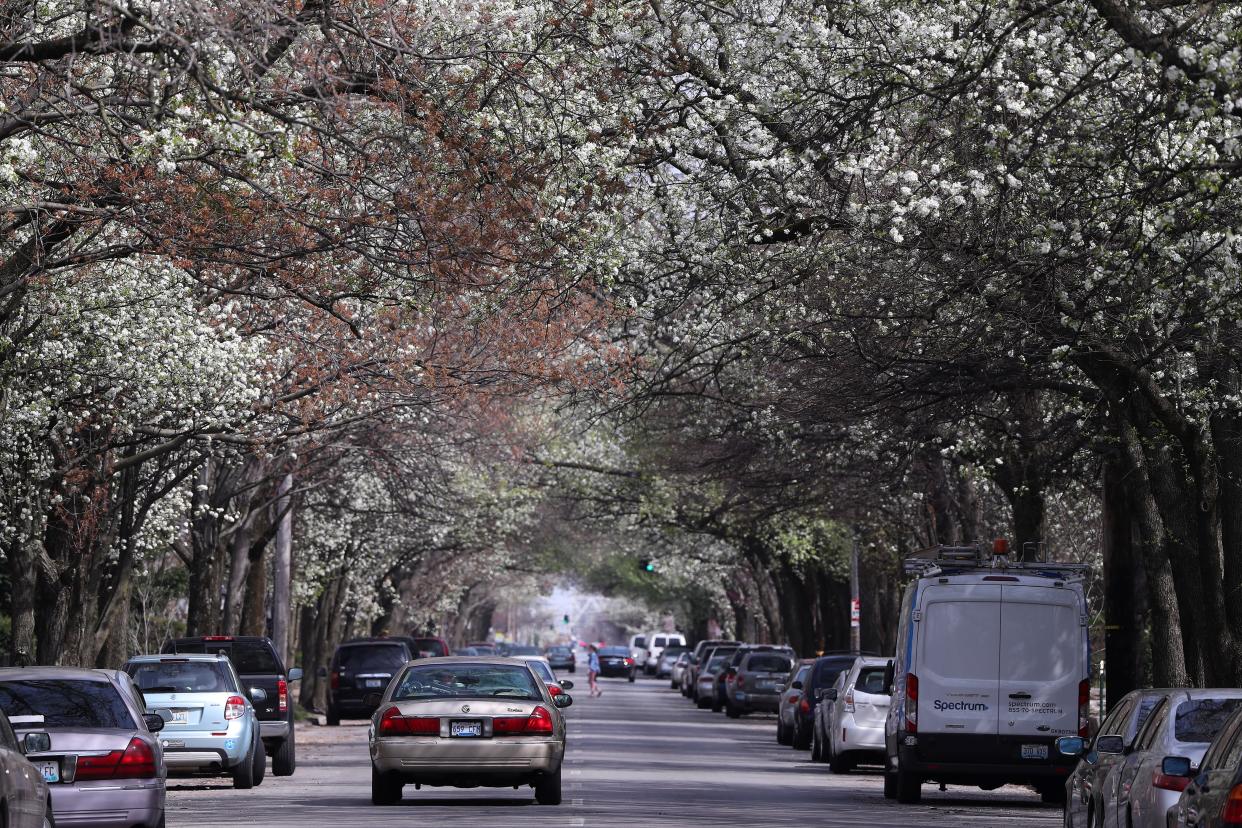Louisville is getting $12 million for trees. Here's where the money will be spent

A $12 million grant from the U.S. Forest Service will help improve Louisville's urban tree canopy in underserved neighborhoods, the mayor's office announced Wednesday.
The grant is the largest Louisville Parks and Recreation has ever received from the Forest Service.
The funding will support the work of Parks and Recreation's Urban Forestry Division. Lack of resources and staffing have made it difficult to keep up with tree canopy across the city, staff told The Courier Journal last month.
Tree canopy is proving more vital as Louisville's summers grow hotter in the changing climate. Plus, the benefits of the existing canopy are not spread equitably across the city, based on past inventories, urban heat analysis and census data.
Here's what we know about the grant and how it could benefit urban forestry efforts:
How will Louisville use urban forestry funding?
Officials plan to use the federal funds to plant trees, maintain the existing canopy, and develop a tree inventory and management plan, according to a news release.
Community outreach will also be involved, "to foster environmental stewardship and the creation of a green industry workforce development program."
A large portion of the funding will go toward the maintenance of already existing trees, said arborist Jacquelyn Eklund.
"The No. 1 problem I hear when we're talking about the tree canopy is that people don't have money to take care of trees as they're aging and dying," Eklund said. "A huge portion of this grant is going towards alleviating that burden on residents."
Louisville's grant is one out of a $1 billion national initiative for 400 urban and community forestry projects. It's part of the Biden administration's Justice40 initiative, intended to direct 40% of federal climate, environment and energy investments toward disadvantaged communities, or "Justice40 areas," which make up nearly a quarter of Louisville, according to the release.
How many trees will be planted?
Louisville's funding would support about 1,000 tree plantings per year for five years centered in those designated communities, officials said at a Wednesday press conference
The "designated communities" include Shawnee, Russell, Portland, California, Iroquois, Beechmont and along Taylor Boulevard, Eklund said.
Tree planting efforts in Louisville are consistently up against tree removals. In areas like eastern Jefferson County, local residents and urban forestry staff have raised concerns about developments clearing dozens of acres at once, due to the current land development code, as well as lack of enforcement.
The trees funded by this grant will most likely be planted beginning in fiscal year 2025, Eklund said.
What will the workforce development program look like?
It is written as a "three-month program run twice a year" where employees will work with Metro's forestry crew, Olmsted Parks and non-profit organizations.
Officials said numbers on job creation from the funding would come later this fall. The workforce development will only go toward people in "Justice40 areas," Eklund said.
Why is urban tree canopy important?
Trees cool neighborhoods, both by casting shade and through evapotranspiration, the process by which plants release moisture into the air. But they also intercept stormwater and filter airborne pollutants, like ozone and carbon monoxide.
"We see correlations with health outcomes and community health with urban tree canopies," Eklund said.
Louisville's tree canopy has been credited with saving the city $330 million annually. But current tree canopy estimates show lower concentrations in Louisville's more impoverished neighborhoods, spreading their benefits inequitably.
Reach reporter Eleanor McCrary at EMcCrary@courier-journal.com or on Twitter at @ellie_mccrary.
Connor Giffin is an environmental reporter for The Courier Journal and a corps member with Report for America, a national service program that places journalists in local newsrooms to report on under-covered issues. The program funds up to half of corps members’ salaries, but requires a portion also be raised through local community fundraising. To support local environmental reporting in Kentucky, tax-deductible donations can be made at courier-journal.com/RFA.
Learn more about RFA at reportforamerica.org. Reach Connor directly at cgiffin@gannett.com or on Twitter @byconnorgiffin.
This article originally appeared on Louisville Courier Journal: Multi-million dollar federal grant to bring more trees to Louisville

